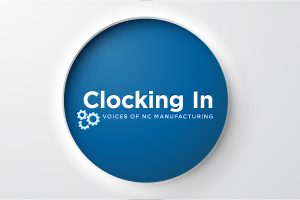We have been learning and growing our knowledge of the world and our interactions with it since birth. Throughout our lives, not a day will go by without some learning opportunity presenting itself.
As adults in the workplace, we learn from our experiences, our interactions and formal training sessions. These three elements of professional development make up the 70-20-10 concept, which explains how we learn the skills we need to be successful at our jobs.
Most of what we learn as employees—70 percent—is learned in normal daily work activities. We learn from doing, refining and improving. Some of the best learning experiences come from our mistakes and our ability to change to avoid making those same mistakes in the future. As we spend more time in a job, we get better at it. As learners by doing, we are able to professionally develop ourselves!
We also learn from each other. Interacting with co-workers provides a social learning environment Sometimes it is achieved formally—through mentorships, coaching or feedback from managers. Or, it may be informal, like when we share successes or failures with colleagues in the break room. It is important to prioritize this type of learning within an organization—social learning makes up 20 percent of our professional development. Unlike children, who learn easily in a collaborative environment, adults sometimes need designated outlets for social learning. You might offer formal mentoring or coaching programs that leverage the skills and knowledge of seasoned employees to help others grow. You may want to offer social collaboration sessions that center on enhancing employee skills or knowledge.
Formal training makes up another 10 percent of an employee’s professional development time, on average. While on-the-job learning and social learning may have the biggest impact on individual employees, classroom or online training is often the easiest method to provide targeted instruction across an organization. A formal training event that is relevant and timely can have a significant impact on employee learning. As children, we learned what we were told was important to know; as adults, we question why a new concept or skill is important to learn. When an employee can see the direct benefits to them as an outcome of training, then the new concept or skill is more easily learned.
Your company may not be able to send all employees to a formal training event. But, even a few employees who are able to attend a formal training can then utilize social learning to extend an equivalent professional development opportunity to others.
The 70-20-10 concept has been in use since the 1980s. Over time, these percentages have varied, with slightly different emphasis for on-the-job and social learning aspects. There is no rule for how much of either type of learning is best, though it remains good practice to encourage hands-on and social learning in the workplace while seeking out formal training sessions that have a direct benefit to employees on the job. To professionally develop the most well-rounded employees, feel free to mix it up!
—
Katherine Bennett leads the Instructional Design team for NC State IES. She also serves as project manager for instructional design services. Katherine plays a key leadership role in supporting the IES goal of providing instructional design and development expertise that complements the field-specific expertise of IES partners, while meeting the learning needs of target audiences. Katherine holds a bachelor’s degree in Computer Science from the University of North Carolina at Charlotte and a master’s degree in Instructional Technology from East Carolina University.



